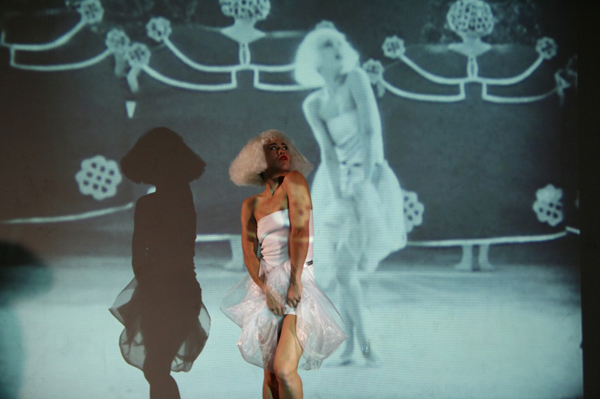Kunsthalle Exnergasse, Währinger Straße 59, 2nd Staircase, 1st Floor, 1090 Wien
19 January - 3 March 2012. Opening on 18 January, 19h.
Works in the Exhibition
Pauline Boudry (D/CH) & Renate Lorenz (D)
Pauline Boudry is an artist based in Berlin, working with film, video and installation. She is interested in relating the usually separated fields of sexuality and work, contextualizing her research in a post-colonial discourse. Renate Lorenz has been working since the beginning of the 1990s at the interface of culture, theory and politics. In the mid-1990s she curated a program at the Shedhalle in Zurich on the development of theme-based feminist exhibition models (together with Sylvia Kafehsy). In 2007 she curated "normal love. precarious work, precarious sex" at Künstlerhaus Bethanien in Berlin.
Their works in collaboration often revisit materials from the past, usually photographs or films, referring to and excavating unrepresented or unlegible moments of queerness in history. These works show embodiments which are not only able to cross different times, but also to draw relations between these different times, thus revealing possibilities for a queer futurity.
Salomania (2009)
Installation with video and documentation; video HD, 16:9, color, English, 17 min.
The 2009 work Salomania, consisting of an installation with HD film and documentation, reconstructs the dance of the seven veils from Alla Nazimova's Salomé. Artist, performer and gender activist Wu Ingrid Tsang (1982), and choreographer and filmmaker Yvonne Rainer (1934) are the performers in the film. The original movie from 1923 was directed by Charles Bryant, and was a film adaptation of the Oscar Wilde play with the same name. The silent movie was produced by openly gay actrice Alla Nazimova who also starred in it, whilst being Bryants (beard)wife at the time. The character of Salome gained popularity at the beginning of the 20th century with Oscar Wilde 1894 play. Women got together and imitated the exotic and liberating dance of the seven veils. Images of farness and of the technological can be seen as part of colonial politics, at the same time they seem to have been transformed by the film Salomé. Here they are established as images that make space for female or transvestic fantasies and desires. A space between the genders and between Orient and Occident appeared to be possible. A documentation on different performers of the dance of Salome at the turn of the 20th century proposes a sort of archaeology in the history of queer performance and modern dance.
Salomania (2009)
Installation, video and documentation
Courtesy the artists and Ellen de Bruijne Projects
